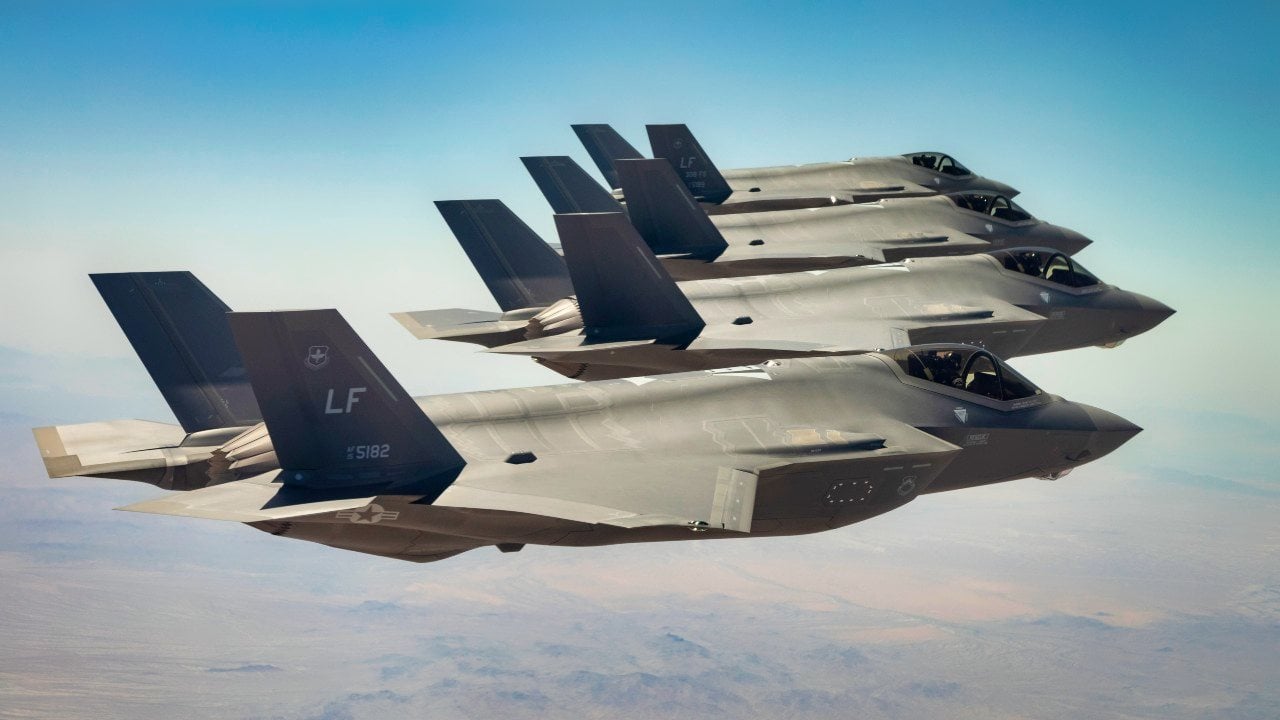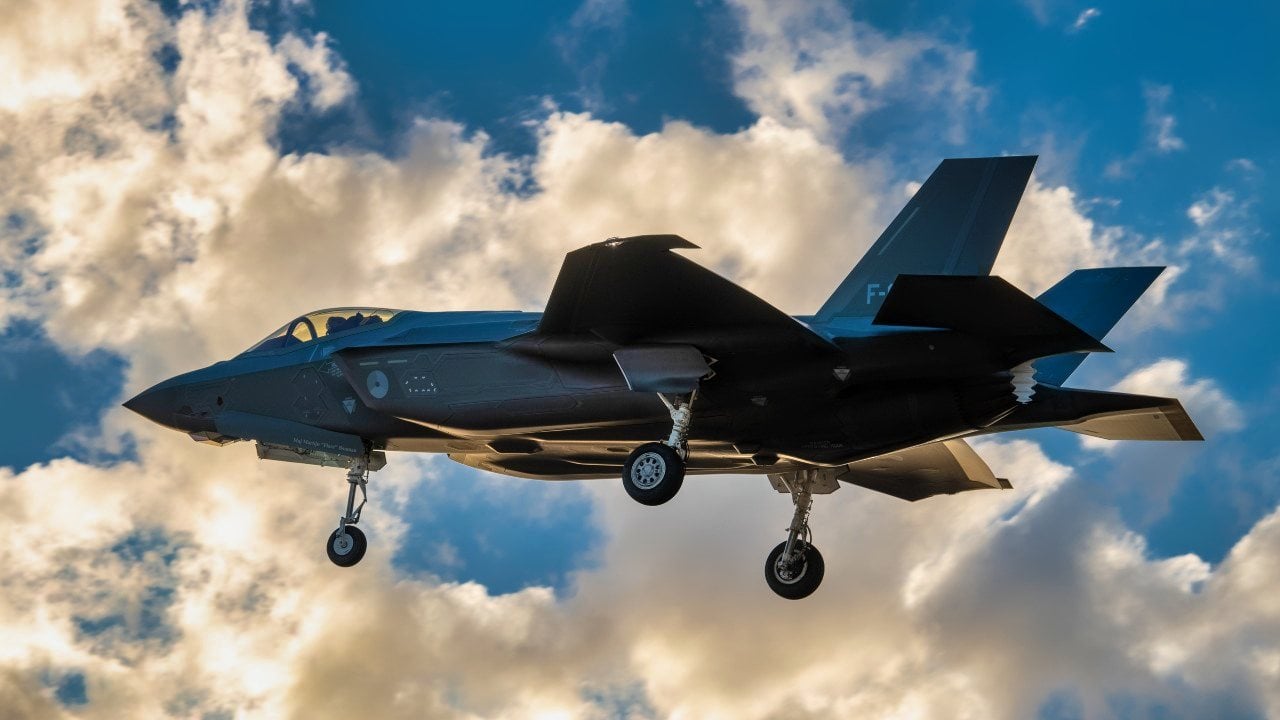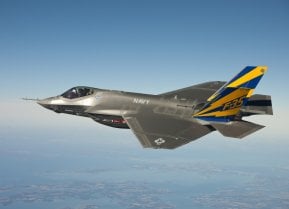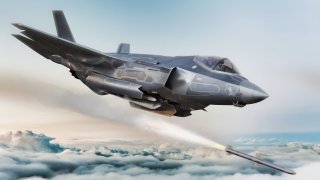F-35 Fighter: Now an Electronic Warfare Beast That Is Simply Untouchable
In January, the Pentagon awarded Lockheed Martin a $97.3 million contract to integrate AGM-88G High-Speed Anti-Radiation Missiles (HARMs) on all F-35 Lightning II stealth fighter variants.
Summary and Top Line Points You Need To Know: In January, the Pentagon awarded Lockheed Martin a $97.3 million contract to integrate AGM-88G High-Speed Anti-Radiation Missiles (HARMs) on all F-35 Lightning II stealth fighter variants.

-This upgrade will enhance the F-35's electronic warfare capabilities and benefit U.S. Air Force, Navy, Marine Corps, and international F-35 program members.
-The AGM-88 HARM, designed to target enemy radars and air defense systems, has proven effective in Ukraine, where it has been used to suppress Russian air defenses.
-The integration on F-35s aims to ensure a robust stock of anti-radar munitions.
Lockheed Martin to Equip F-35s with Advanced AGM-88G HARM Missiles
Early in January, the Pentagon awarded Lockheed Martin a contract worth almost $100 million to integrate the AGM-88G High-Speed Anti-Radiation Missiles (HARMs) on all three types of the F-35 Lighting II stealth fighter jet.
The F-35, Harms, and Electronic Warfare
Worth $97.3 million, the contract will upgrade the powerful anti-radar missile for the U.S. military and other members of the F-35 program.
The integration will benefit the U.S. Air Force (flies the F-35A), Navy (flies the F-35C), Marine Corps (flies both the F-35B and F-35C), as well as foreign military sales participants and non-Department of Defense participants (essentially every member of the F-35 program).
In addition, the contract requires Lockheed Martin, which is also the manufacturer of the F-35 Lighting II, to reprogram laboratory equipment in the most recent batches of aircraft.
The AGM-88 HARMs is designed to be intergraded on the F-16 Fighting Falcon, which was the only aircraft that could carry the munition for years. The upgraded version of the weapon system, the AAGM-88E Advanced Anti-Radiation Guided Missile, can match with more aircraft, including the F-35 Lighting II series, the F/A-18 Hornet and Super Hornet, and the E/A-18G Growler.
The push to modify the AGM-88 HARMs for use with the F-35 stealth fighter jet is likely the result of a light stock of the more advanced version. The Air Force is likely looking to ensure a ready stock of anti-radar munitions of all types until production of the AAGM-88E catches up.
A high-speed, air-to-ground tactical missile, the AGM-88 HARM is designed to take out enemy radars and air defense systems, thus opening the way for follow-on air strikes by other aircraft. Made by Raytheon, the munition first entered service in 1984 and costs about $200,000 per unit. It can achieve supersonic speeds, has a high explosive warhead, and it can reach targets up to 30 miles (48~ kilometers) away. It is 13 feet long and weighs 800 pounds.
The AGM-88 HARMs in Ukraine
The ongoing conflict in Ukraine is showing that electronic warfare is very much part of modern warfare. Both the Ukrainian military and the Russian forces are using electronic warfare systems to track, target, disrupt, and degrade the other side. Whether it is jamming a Russian platoon’s tactical communications in the Donbas or interfering with an incoming wave of Ukrainian suicide drones, electronic warfare is playing an unseen but key part in the fighting.

The Pentagon has sent an unspecified number of AGM-88 HARMs to Kyiv. Ukrainian maintainers have restructured their Su-25 Frogfoot, Su-27 Flanker, and MiG-29 Fulcrum to be compatible with the AGM-88 HARM. And the Ukrainian Air Force has already been putting the munition to good use, suppressing Russian air defense systems close to the battlefield or around strategic targets. The Russian military wasn’t really prepared for such a munition and has lost several key air defense systems. With the introduction of the F-16 Fighting Falcon in Ukrainian service in the upcoming months, the Ukrainian Air Force will have a much stronger combination for electronic warfare missions.
About the Author
Stavros Atlamazoglou is a seasoned defense journalist specializing in special operations and a Hellenic Army veteran (national service with the 575th Marine Battalion and Army HQ). He holds a BA from Johns Hopkins University and an MA from the Johns Hopkins School of Advanced International Studies (SAIS). His work has been featured in Business Insider, Sandboxx, and SOFREP. Email the author: [email protected].
All images are sourced from Shutterstock or Creative Commons.


